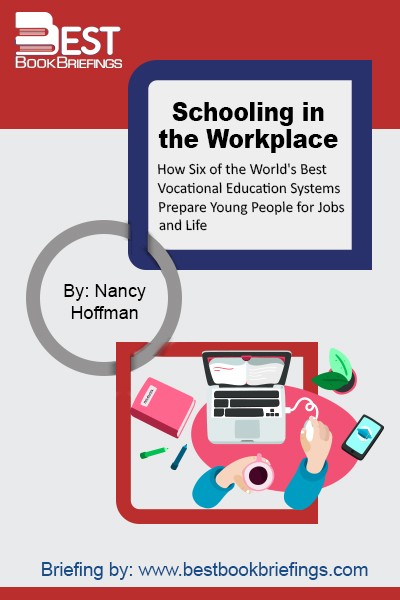Schooling in the Workplace
How Six of the World's Best Vocational Education Systems Prepare Young People for Jobs and Life
Number of pages: 224
Publisher: Harvard Education Press
BBB Library: Education, Corporate Success
ISBN: 9781612501116
Editorial Review
Across the developed countries today, educators, policy makers, and economists recognize that the new “knowledge economy” demands new and higher levels of skills than the twentieth-century high school or upper secondary school provided. Young people with aspirations to white-collar, “middle-skill” jobs in high-growth areas such as health care, high tech, engineering, and finance, as well as those choosing the old trades, need more sophisticated skills and knowledge than ever before, ranging from the ability to problem solve in messy situations to statistics to technical reading and writing. Countries that are doing much better by their young people—supporting them to achieve academically at higher levels, keeping them in school, and, most importantly, structuring the transition from school to work so that almost everyone has training for an initial career and enters the workforce smoothly—share two characteristics: they see the younger generations as important to support, protect, and engage with as an investment in future prosperity. And, in partnership with employers and unions, they educate from 40% to 75% of their young people in a vocational education system that links education and labor market needs and includes substantial learning in the workplace.
Book Reviews
Books on Related Topics

We increasingly treat education as though its primary goal were to teach students to be economically productive rather than to think critically and become knowledgeable and empathetic citizens. This shortsighted focus on profitable skills has eroded our ability to criticize authority, reduced our sympathy with the marginalized and different, and damaged

In this book, nine authors from three continents, ranging from academics to business leaders, share their visions for the future of learning and work. Educational and organizational implications are uncovered, experiences are shared, and the contributors explore what it's going to take for individuals, organizations, and nations to succeed in Knowmad

No generation can escape the responsibility of deciding what students should learn by analyzing what adults are called upon to do. In the old days, people were taught to do simple calculations, write letters, and read. As farming grew in complexity, schools in rural areas began teaching vocational agriculture. With the

Who refers to the people you put in place to make the what decisions. Who is running your sales force? Who is occupying the corner office? Who is where the magic begins, or where the problems start. We have identified four parts of the hiring process where failure typically occurs. It

There is near-universal agreement that schools must find ways to transform older teaching practices in order to harness the tools that students have at their disposal today. This book introduces you to many of the most useful tools and concepts for an education setting so that you can decide, along with



